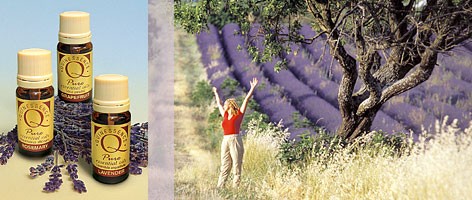
Plant Anatomy
Plant anatomy is the study of plant tissues and cells in order to learn more about the way these organisms are constructed and how they work. These studies are very important because they lead to a better understanding of how to care for plants and fight plant diseases. Plant anatomy is also known as phytotomy.
A plant is a complex structure that consists of a number of parts which constitute the whole plant. If you learn to identify each individual part, you will gain a much greater understanding as to how the plant works as a whole. This can be helpful to aromatherapists who need to be aware of the part of the plant an essential oil was derived from because there is often a connection between the oils location in a plant and its therapeutic action. Understanding plant anatomy also helps everyone appreciate the art of distillation and extraction.
The Life Span of a Plant
Plant species vary not only in appearance, but also in their longevity (length of life). Annual flowering plants only live for one year whereas biennial plants live for two years, producing only leaves in the first year and flowering in the next. Perennial plants live for more than two years. They might be evergreen (never losing their leaves) or deciduous (loses the leaves in autumn). A plant's status as an annual, biennial, or perennial can vary due to its geographical location and purpose of cultivation. Essential oils are extracted from a mixture of these different biological lifecycles.
All plants consist of some basic parts as follows.
The Flower
Not all plants flower but many plants from which essential oils are extracted from are flowering plants; for example, lavender (Lavandula angustifolia), rose (Rosa damascena) and rosemary (Rosmarinus officinalis).
The flower of a plant is a complex structure. These are the various parts which make up the flower of a plant:
- the petals (made up of the corolla)
- the calyx (the outer, or green, leaves)
- the stamen (containing the pollen which insects and birds are attracted to)
- the pistil (containing the ovary, the style and the stigma of the flower).
The Fruits and Seeds
The seed of a plant contains the nucleus; a new plant grows from the seed as long as the growing conditions are right for it to do so. Plants also contain fruits which might be described in one of the following ways:
- follicule
- legume (pod)
- drupe
- achenium
- caryopsis
- cremocarp
- nut
- berry
- samara
- pome
- pepo
- silique
- capsule
- cone
Plants that have fruits from which an essential oil is extracted include lemon (Citrus limon) and sweet orange (Citrus sinensis).
The Leaves
The leaves grow on the part of the stalk called the petiole. Leaves might be short, fat, long, thin, hairy, curvy, indented, wispy or any number of other shapes, textures and colors. The various types of leaves on a plant are botanically identified as follows:
- Lanceolate
- Cuneiform
- Sagittate
- Ovate
- Cordate
- Pinnate
- Pectinate
- Runcinate
- Lyrate
- Palmate
- Pedate
- Obovate
- Reniform
- Hastate
- Serrate
- Peltate
- Dentate
- Crenate
- Sinuate
Plants that produce a leaf essential oil include cinnamon (Cinnamomum zeylanicum) and petitgrain (Citrus aurantium var. amara).
The Stem
Stems are found on all flowering plants and gravitate towards the light and air, away from the root. Some plants might appear stemless but they actually have the stem below ground or the stem is extremely short. A tree's stem is better known as the trunk. Herbs have stems which die after flowering. Essential oils are extracted from all of these types of plants.
Clove (Syzygium aromaticum) produces a stem essential oil, although clove bud is always the more preferable essential oil for aromatherapists to use since it is much less irritant to the skin.
The Roots
The root of a plant is usually located in the soil below the plant. It acts as an anchor for the plant. Types of roots include:
- Fusiform root – root tapers both up and down, for example, a radish (Rhapanus sativus)
- Fasciculated root – the fibers or branches are thickened
- Tuberiferous root – some of the branches of the root become rounded knobs, such as in a potato (Solanum tuberosum) and sometimes culminate in a branch known as a palmate root
- Aerial root – the root actually grows into the open air, such as in Indian Corn
- Conical root – the root tapers regularly from the crown to the apex of the plant, for example, a carrot (Daucus carota)
- Napiform root – the root is swollen at the base and extends horizontally more than vertically, such as in a turnip (Brassica napa)
- Rhizome root – thick, spreading root such as in ginger (Zingiber officinale)
Ginger (Zingiber officinale) produces an essential oil from the roots of the plant.
Copyright © Quinessence Aromatherapy Ltd 2012. Written by Geoff Lyth
If you enjoyed this article, please click the 'Like' button and help spread the word:


